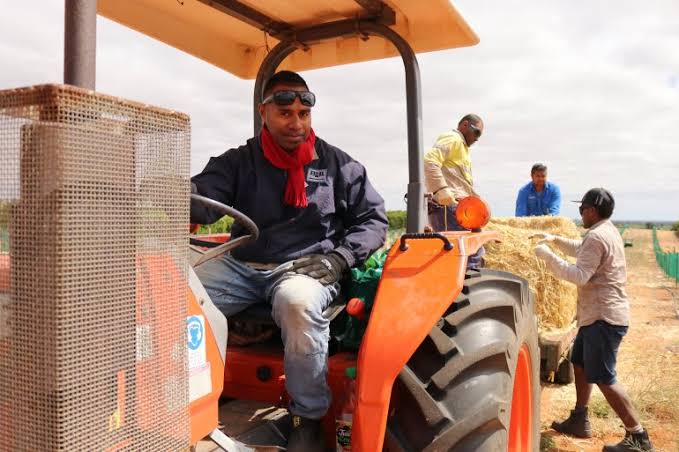Australia and New Zealand’s seasonal labor programs are assisting families to recoup revenues and pay for the needs of their communities as Pacific Island nations work to recover from the COVID-19 pandemic.
The programs enable thousands of residents of Pacific Island countries to work in agriculture and horticulture at earnings that are much better than those they would receive at home.
Agnes from Vanuatu was able to give her family the much-needed financial security they required during the pandemic by working for 11 months in Western Australia in 2021.
After spending four months picking strawberries on a farm in Western Australia, Agnes, 43, who requested to only be referred to by her first name, said, “I went into hospitality and worked in a resort in Kununurra in the extreme north of the state.”
“The higher income I made in Australia helped me support my family in Vanuatu, pay for education expenses, and cover living expenses.”
However, the so-called labor mobility programs elicit mixed reactions in the Pacific Island countries.
The programs, which give Pacific Islanders economic possibilities, are also accused of siphoning off talent and labor from the small, remote countries, many of which have long battled with slow growth and high unemployment.
While Australia’s Pacific Australia Labour Mobility (PALM) program is intended to help the unemployed and low-skilled, several governments in the area claim that a sizable portion of individuals who enroll are really employed in industries like manufacturing, hospitality, tourism, and healthcare. The PALM program, which allows residents of Pacific Islands to work in Australia for up to four years in industries with labor shortages like agriculture, hospitality, and aged care, is anticipated to expand its reach given estimates that there could be up to two million mid-skill job openings in Australia by 2050.
Higher wages in Australia provide a significant incentive for skilled Ni Vanuatu, the ethnic group native to Vanuatu, a collection of 80 or so islands located roughly 1,750 km (1,080 miles) east of Australia, to move abroad, according to Astrid Boulekone, general manager of the Vanuatu Chamber of Commerce and Industry.
“Skilled Ni Vanuatu employees who are currently employed are quitting their positions to join the Pacific labor mobility program. According to Boulekone, this is making it even harder to find Ni Vanuatu workers with the necessary skills and work experience to replace those who have quit their jobs to move to Australia or New Zealand. “It is harming local businesses’ ability to lead Vanuatu’s post-pandemic economic development.”
According to Fuimaono Rosalia Me, a cultural adviser for the non-profit Women in Business Development, the labor programs have also been held responsible for worsening labor shortages in the local agricultural industry in Samoa, which has a GDP (gross domestic product) per capita comparable to that of Vietnam.
As the backbone of our economy, Rosalia Me said, “it has taken away our completely able people who are crucial for the future of families that support agro-businesses and help exports in agriculture goods to foreign and specialized markets.”
While the Australian government claims that Pacific Island countries choose temporary workers, a study conducted by the Development Policy Unit of the Australian National University last year found that more than 10% of the male working-age populations of Tonga, Samoa, and Vanuatu are thought to be employed as temporary workers in Australia and New Zealand.
Uneven labor markets have long been a problem for Pacific Island nations. In several of the islands, population growth has long exceeded economic growth. There are not enough official sector positions, the private sector is underdeveloped, and there are a lot of young people, which puts a lot of Pacific Islanders at risk of losing their jobs.
According to Australia’s Lowy Institute, only one-quarter to one-third of school-leavers in the region land formal sector jobs.
According to the Lowy Institute, the informal economy in many Pacific Island nations is left to support up to 85% of the working-age population.
The informal sector is essential to the existence of millions of people in the region, but it is also beset by low salaries and unfavorable working conditions, issues that were made worse by the pandemic.
The smallest island nations, where the exodus of people of working age has been felt most sharply, have voiced the greatest concerns. In temporary worker programs in Australia and New Zealand in the middle of 2022, there were 34,400 Pacific Islanders; one-third of them were from Vanuatu, 22 percent from Samoa, and 15 percent from Tonga, compared to just 10 percent from the larger Fiji and Solomon Islands.
Governments in the area have nonetheless admitted that labor-saving measures will be crucial to their ability to recover from the pandemic.
Economists have estimated that the GDP per capita in nations like Vanuatu, the Solomon Islands, Samoa, and Nauru will remain below pre-pandemic levels in 2027.
Leatinu’u Wayne So’oialo, Samoa’s Minister of Commerce, Industry, and Labor, said in a speech to a regional labour mobility summit held in the country’s capital Apia in November: “Since the COVID-19 pandemic, labor mobility opportunities have become even more critical to help support our economic and social recovery efforts, particularly at the household level.”
Wayne So’oialo acknowledged the necessity of addressing problems like brain drain at the same time.
Despite these reservations, one of the stated objectives of the labor initiatives has been to increase the level of expertise in the Pacific Islands.
According to a representative of Australia’s Department of Foreign Affairs and Trade, “the Australian Government encourages the recruitment of unskilled employees and invests in skills development for the Pacific and Timor Leste workers to guarantee we achieve a ‘brain gain’ for the Pacific family.”
The Vanuatu Chamber of Commerce and Industry’s general manager, Boulekone, claimed that the programs have benefited the nation by providing “remittances, upskilling, and investment opportunities for our men and women in personal, family, community, and business activities.”
According to Rosalia Me of Women in Business Development, labor mobility in Samoa “raises standards of living, allowing Samoan families to build homes, buy vehicles, land in urban areas, and luxury things, such as TVs, washing machines.”
“For the communities, it helps with the construction of churches, schools, and communal gathering spaces.”
According to a report by Richard Curtain, a specialist on Pacific labour markets and migration at the Australian National University, increasing recruitment from the more populous countries with high levels of poverty, such as Papua New Guinea (PNG) and the Solomon Islands, as well as from rural and remote areas, would increase the benefits of labor mobility to the most vulnerable people and lessen the burden on smaller countries.
Compared to Vanuatu’s population of approximately 300,000 and Samoa’s population of just over 200,000, PNG and the Solomon Islands have populations of about 9 million and 700,000, respectively. The Australian government has promised to enhance recruiting in more developed nations and asserts that it has increased Solomon Islander participation more than nine times in less than two years.
In order for Islanders to be “educated to be able to become innovators and inventors using our own local resources and knowledge,” rather than just “labourers in a foreign land,” there should be a long-term national plan regarding labor mobility, according to Merilyn Temakon, an assistant lecturer in law at the University of the South Pacific in Fiji.
However, Agnes still finds it difficult to get employment at home, despite her further training and experience.
“Work is quite difficult to come by in Vanuatu. Although I’m now unemployed, I’m seeking for housekeeping work,” she remarked.





